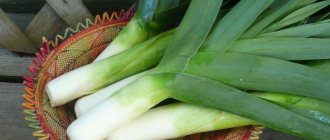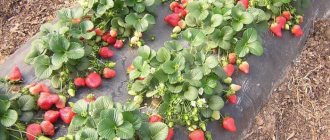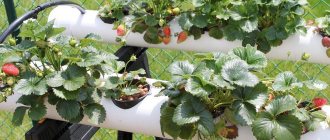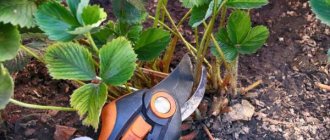Strawberries are a very tasty and healthy berry. It contains many microelements (phosphorus, magnesium, calcium), vitamins, folic acid. Unfortunately, its fruiting does not last long and in the remaining months you have to buy imported or greenhouse berries. Of course, berries grown independently are the most delicious. How wonderful it would be if berries grew on our balcony or windowsill!
It turns out that you can grow strawberries on your windowsill all year round. The main thing is to choose suitable varieties of strawberries and create the necessary conditions. Investments in this venture are minimal. You will need to buy several seedlings and soil mixture. So, how to grow strawberries at home?
Choosing varieties
Strawberry varieties for growing on balconies are becoming increasingly popular. There are quite a lot of advantages of this solution. Homemade strawberries grown in containers take up little space and are easy to harvest. It ripens without contact with the ground, making it less susceptible to rot and disease. Berries are always at hand.
Strawberries were produced in Europe in the early 18th century by the intersection of 2 species of strawberries: Fragaria virginiana and the Chilean Fragaria chiloensis. Since then, breeders have created many resistant and productive varieties. The most valuable for gourmets are dessert ones - large, sweet, juicy.
Any variety can be grown in a container, but there are varieties that are most suitable for this purpose:
- In order for strawberries to bear fruit for several months, it is necessary to plant remontant varieties that produce several harvests.
- Attention should also be paid to the photoperiodicity of fruiting. Day-neutral varieties that are characterized by stable, continuous fruiting are better suited for planting on a windowsill. According to reviews, they are better suited for growing indoors.
The table below shows the characteristics of popular day-neutral strawberry varieties.
| Variety name | Weight of berries, grams | Berries shape |
| Albion | 30-40 | Cone-shaped |
| Queen Elizabeth | 40-50 | Comb-shaped |
| Capri | 30-40 | Cone-shaped |
| Fusion | 20-30 | Cone-shaped |
| Miracle of the world | 35-45 | Comb-shaped |
Is it possible to grow other varieties of strawberries at home on the windowsill? Yes, but the yield will be significantly lower. Most of the time, the plants will delight you with beautiful carved greenery, and only sometimes berries will form.
Growing conditions
In order for strawberries to bear fruit abundantly and continuously, it is necessary to pay close attention to the growing conditions.
Lighting
Whatever strawberry is chosen for normal development and flowering, it needs a large amount of bright, sunlight. South-facing windows are best suited for placing boxes with plants. On the north side you will have to install lighting using fluorescent fluorescent lamps or special LED-based phyto-lamps. They can be purchased at special gardening stores.
Attention! Even if located on the south side in winter, strawberries still need to be illuminated. The total daylight hours should be at least 12 hours.
Temperature
The optimal temperature for growing strawberries is 23-25°. At higher temperatures, pollination deteriorates significantly and there are fewer berries. If it is lower, the risk of developing fungal and putrefactive diseases increases.
Humidity
Growing berries does not require high humidity. In most cases, plants adapt well to room conditions. Problems may arise when placing boxes near radiators or other heat sources. In this case, to increase humidity, small containers of water are placed next to the strawberries.
Selection of containers for planting
You can grow strawberries on a windowsill in an apartment in any boxes or pots of suitable size. The choice of container for planting is limited by the size of the window. In most cases, it is convenient to use ordinary balcony boxes with a sufficient number of drainage holes. In their absence, constant stagnation of water will occur, harmful to the root system.
The minimum diameter of the pot in which strawberries can be planted is 25-30 cm.
The soil
The soil for growing strawberries should be:
- loose,
- moisture-intensive,
- nutritious.
For planting, choose humus soil with added compost or peat and a small amount of sand. The correct soil reaction is neutral or slightly acidic (pH 5.5 - 6.5).
Strawberries do not like alkaline or acidic soils.
The soil can be composed of equal parts of humus, peat, leaf soil and clean river sand. If it is not possible to compile it yourself, you can purchase a ready-made industrial substrate based on universal-purpose peat. Its characteristics are almost identical to the soil mixture described above.
Before planting, you can mix the soil with hydrogel. This will help maintain constant soil moisture and protect plants from water shortages.
Saplings or seeds?
Whatever variety you choose, I strongly advise against buying seedlings on the market. The guarantee that it will be the right variety is very small. Do this, for example, in specialized stores - yes, it’s more expensive, but you can have no doubt about the purchase.
By the way, an excellent option, and you can save money, is to purchase strawberry seeds. So you can even become the happy owner of some rare or especially valuable varieties for relatively little money. Of course, growing strawberries from seeds will require some extra effort on your part, but it’s not particularly difficult.
Some people prefer to germinate them in peat tablets and praise this method, but we recommend that you refer to our materials on this topic. “When to plant strawberry seeds for seedlings” is always at your disposal on our website.
Another advantage of this particular method is that since we plan to grow strawberries at home, that is, in an apartment or other living space, we do not have to gradually adapt the seedlings to open ground.
If you want to use seedlings from your garden, then before planting in a pot they must be sprinkled with earth and placed in a cool and dark place for two whole weeks. Adaptation, so to speak. But they also feel great on the windowsill.
Growing seedlings from seeds
When growing at home, you can purchase ready-made seedlings or grow them yourself from seeds. The second method has several main advantages:
- plants grow adapted to specific conditions;
- the cost of purchasing planting material is reduced;
- Self-grown seedlings, unlike Dutch ones, practically do not get sick when transplanted and begin to grow very quickly.
Sowing time
Sowing of seeds is carried out in late January early February.
Sowing technology
- Prepare a small plastic container with loose, nutritious soil.
- The seeds are evenly distributed over the surface of the soil and pressed slightly.
- Strawberry seeds require mandatory stratification. Therefore, after sowing, the container is placed in the vegetable compartment of the refrigerator for 3 weeks or taken outside and buried in the snow.
- After the stratification period ends, the container with the seeds is placed in a warm, well-lit place.
- The first shoots appear after 2-3 weeks. After complete germination, the soil surface between the seedlings is covered with calcined river sand or vermiculite. This will prevent the development of blackleg (a common seedling disease).
- After the development of two true leaves, the plants are planted in separate pots or common boxes.
For planting, you can use thoroughly washed dairy product boxes. The fruiting period of seedlings will begin 5-6 months from sowing. We’ve sorted out growing seedlings, but how to properly plant ready-made strawberry seedlings?
Interesting article on the topic - Growing strawberries from seeds at home
Planting ready seedlings
Whatever variety of strawberry is chosen, the seedlings are prepared for planting in a similar way.
- If plants with an open root system are purchased, they are pre-soaked in a solution of growth stimulants:
- Heteroauxin,
- Epin,
- Kornevin.
Stimulants are diluted in strict accordance with the attached instructions. The growth hormones contained in the drugs have the opposite effect in case of overdose.
- It is necessary to plant seedlings up to the level of the root collar. If the soil is buried deeper, the strawberries will die.
- After planting, the containers are watered abundantly and transferred to a warm, well-lit place.
- If the seedlings were bought in pots, the plants are simply transferred to larger containers. Plants planted in this way practically do not get sick, and after a few days they begin to grow.
When planting, it is important not to cover the leaves with soil because young leaves may become diseased.
Picking strawberry seedlings
The time for picking comes when the seedling has two true leaves.
- We carefully remove the root system from the ground, trying not to injure it.
The sprout must be removed from the ground along with a lump of soil
- Carefully pinch out the longest roots. They can be cut with scissors or broken off with a fingernail.
- We transfer the seedlings to their permanent place of residence in spacious pots.
When filling seedlings with soil, you need to make sure that the growing point is at soil level.
Rules of care
It’s not enough to just plant strawberries; to get a harvest, you need to properly care for the bushes. If you follow the rules of care, the plant bears fruit almost continuously, for 9-10 months a year. So how to grow strawberries?
Watering
Strawberries are quite moisture-loving. For normal development and fruiting, it requires regular, abundant watering. The top layer of soil should dry out slightly between waterings. Excessive moisture will lead to the development of fungal diseases. Water for irrigation is prepared, filtered from chlorine, at room temperature.
Attention! Using tap water is unacceptable; the chlorine it contains is harmful to strawberries.
It is necessary to water strictly at the root, you need to try to ensure that less moisture gets into the center of the rosette and onto the leaves. The frequency of watering depends on the ambient temperature. The higher it is, the more often you will need to water.
Top dressing
When grown on a windowsill all year round, strawberries need intensive nutrition. Organic and mineral fertilizers are used as fertilizers.
At home, organic materials are most often used:
- fermented nettle solution,
- stale tea leaves.
To prepare a nettle solution, the grass is crushed, tightly packed into a small container and filled with water. After this, the container is taken out into the sun. After a week, the fertilizer is ready. Before use, it is diluted in a ratio of 1:10.
In winter, nettle is not available, so you can use dried tea leaves. It is used as a mulching material, carefully distributed over the soil surface.
Universal complexes are used as mineral fertilizers. They are bred according to the attached instructions. On average, fertilizers are applied once every 2 weeks on pre-watered soil.
Trimming
Once every 2-3 years, strawberries grown at home must be pruned. This allows the plants to rejuvenate. All leaves are cut out with sharp scissors. In this case, pruning should not affect the growth point. After pruning, the plants are fed with nitrogen-containing fertilizers.
Pollination
In large industrial greenhouses, bees and bumblebees are used for pollination. At home, pollination will have to be done manually. You will need a brush with soft bristles. It gently transfers pollen from one plant to another. This method is not ideal, so the berries sometimes end up uneven.
For pollination, you can use a regular household fan. The air flow coming from it is directed towards the plants. As in the case of manual pollination, the fan is turned on 2-3 times a day.
Advice! To avoid confusing already pollinated flowers when manually transferring pollen, you can tear off one petal on a flower.
Harvesting
The fruiting time of strawberries in indoor conditions depends on the variety and time of planting:
- when sowing seeds, the first berries appear after about six months;
- When planting ready-made seedlings, the time is significantly reduced - on average, about 1-2 months will pass before the start of fruiting.
The berries are collected as they ripen. Leaving them hanging on bushes is not recommended. Instead of forming new buds, the bushes waste energy on them. As a result, yields are significantly reduced.
Fertilizer application
- The application of fertilizing will allow you to intensify physiological processes in the body.
- You should apply universal and complex fertilizers for indoor plants once a month.
Don't overdo it with nitrogen fertilizers. Otherwise, you will get an abundant green mass without fruit.
- In order for the amount of ovary to increase, there must be enough iron in the soil.
Stick the rusty iron object into the plant pot. This is an old proven method. For greater effect, it is recommended to apply special fertilizers that contain iron.
Diseases and pests
Sometimes the experience of growing strawberries on a windowsill can be unsuccessful. Plants are damaged by pests and suffer from diseases. In most cases, with timely treatments, they can be saved.
Blackleg
Affects strawberries at the seedling stage. Outwardly healthy plants begin to die suddenly at some point. The spread of blackleg begins in conditions of high humidity and low temperature. In most cases, it looks like this: the seedlings were watered abundantly and placed on a cold windowsill. To save the plants, the container is moved to a warm, well-lit place and treated with fungicides. You can use Bordeaux mixture.
Root rot
The main reason for the development of root rot is flooding with water. The problem occurs with excessive watering, lack of drainage, or constant stagnation of moisture in the pan. To save diseased plants, they are urgently transplanted into fresh soil. For the first 2-3 days, the bushes are not watered, only the leaves are sprayed. It will most likely not be possible to save severely damaged plants, but partially damaged plants will begin to grow in 1-2 weeks.
Gray rot
The disease affects the fruits. Gray rot is a frequent companion of thickened plantings. Its development requires high humidity and heat. Infected berries become abundantly covered with a characteristic gray coating and then die. With severe progression, leaves and stems may suffer from gray rot. To combat the disease, fungicidal drugs are used:
- Horus,
- Bordeaux mixture.
To prevent the disease, it is necessary to adjust the conditions of detention.
Aphid
Strawberry plantings often suffer from aphid infestations. Colonies of this sucking pest abundantly cover the lower part of the leaves. Damaged leaf plates curl and dry. To kill aphids, you can use regular laundry soap. All parts of the plant are treated with its solution. If the number of pests is too large, insecticides are used:
- Commander,
- Tanrek,
- Aktara.
In most cases, one treatment is sufficient to kill aphids.
Spider mite
A dangerous pest that feeds on plant sap. Due to its very small size, it can only be detected after mass distribution. A characteristic sticky coating in the form of a cobweb appears on the leaves, and after a while the infected plants begin to dry out. Insecticides are not used to kill spider mites. Due to their biological characteristics, they are simply ineffective. When fighting, acaricides are used:
- Aktellik,
- Fitoverm.
Every year, more and more varieties of strawberries appear, suitable for growing at home, characterized by tasty berries and high yields, resistant to diseases. Carefully grown bushes will certainly repay our efforts with delicious and beautiful berries, in addition, they will be a very original and wonderful decoration for window sills and balconies.
We are preparing a place for an indoor “bed”.
Taking into account the conditions for growing berries indoors at home, it is necessary to create certain conditions. It is worth carefully considering the volume of berries grown and the purpose of “breaking out the beds”. If we grow berries in an apartment for our own consumption, then we will need little space, and even perhaps a homemade garden bed will become a small decoration for your kitchen or balcony. If you have an idea to develop your own business of growing and selling berries, then it is worth setting aside a separate room and creating ideal conditions for a certain species.











